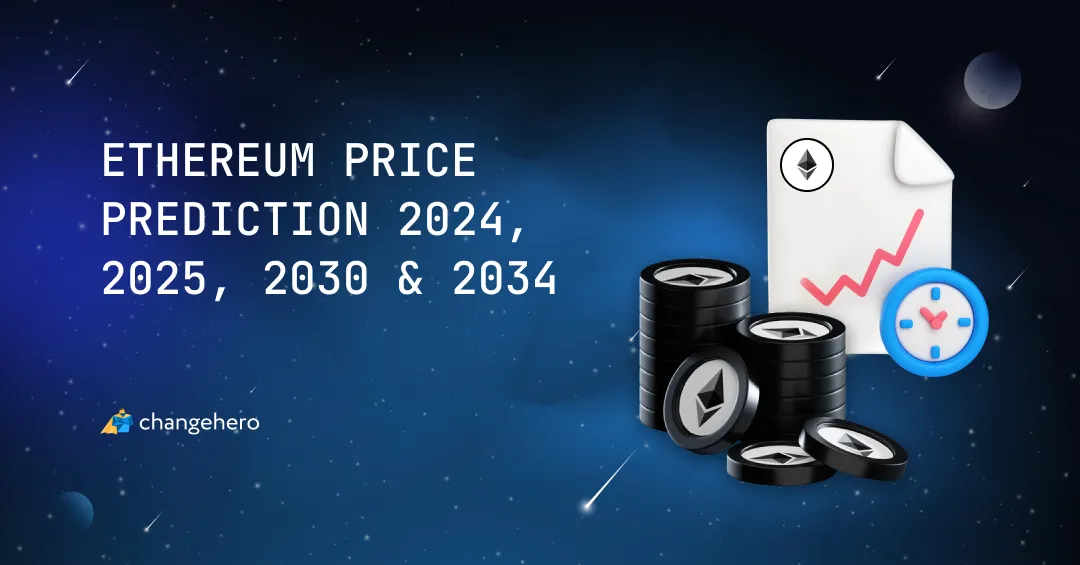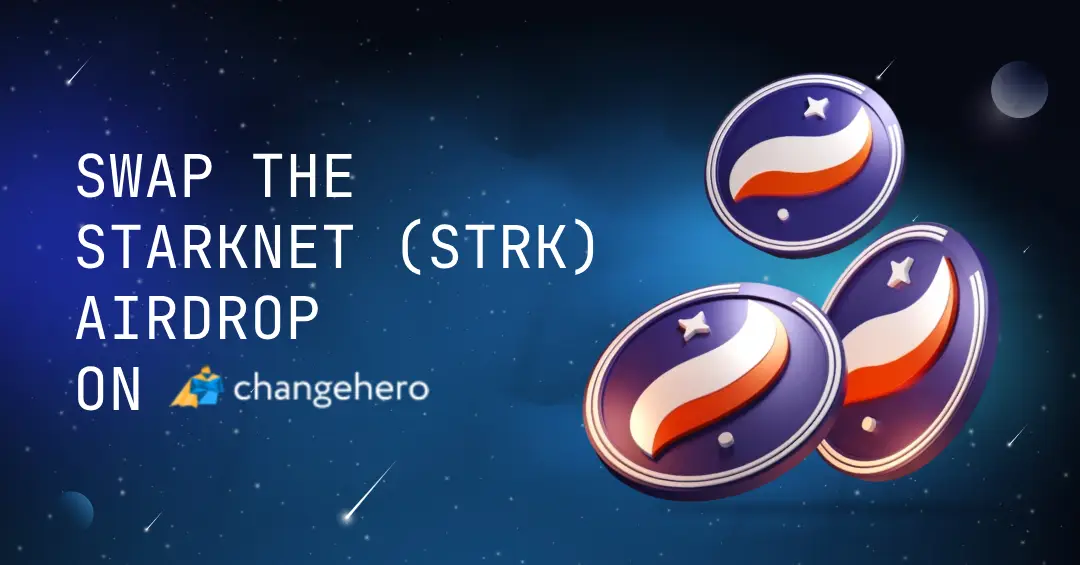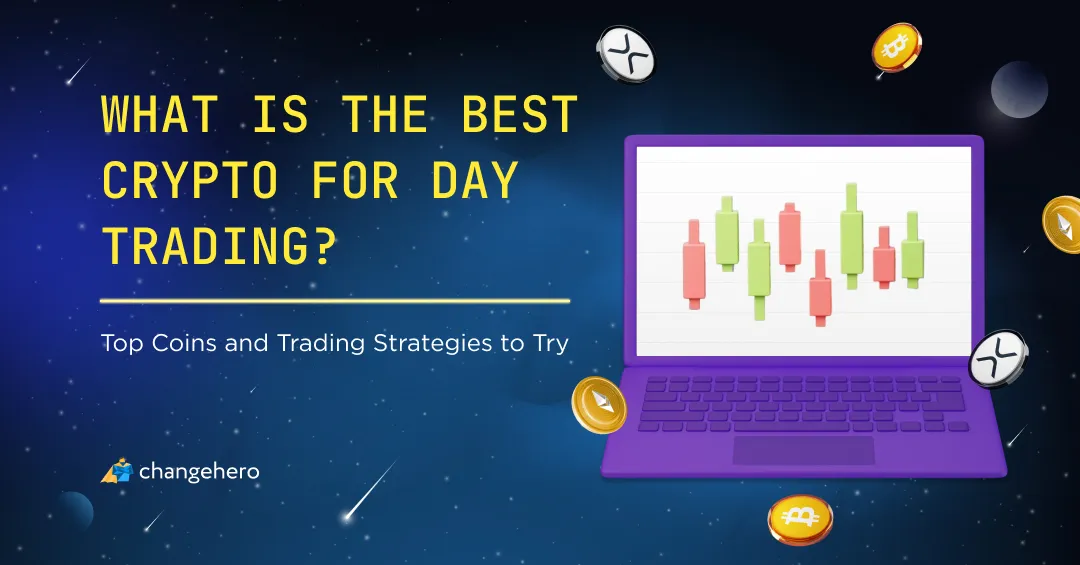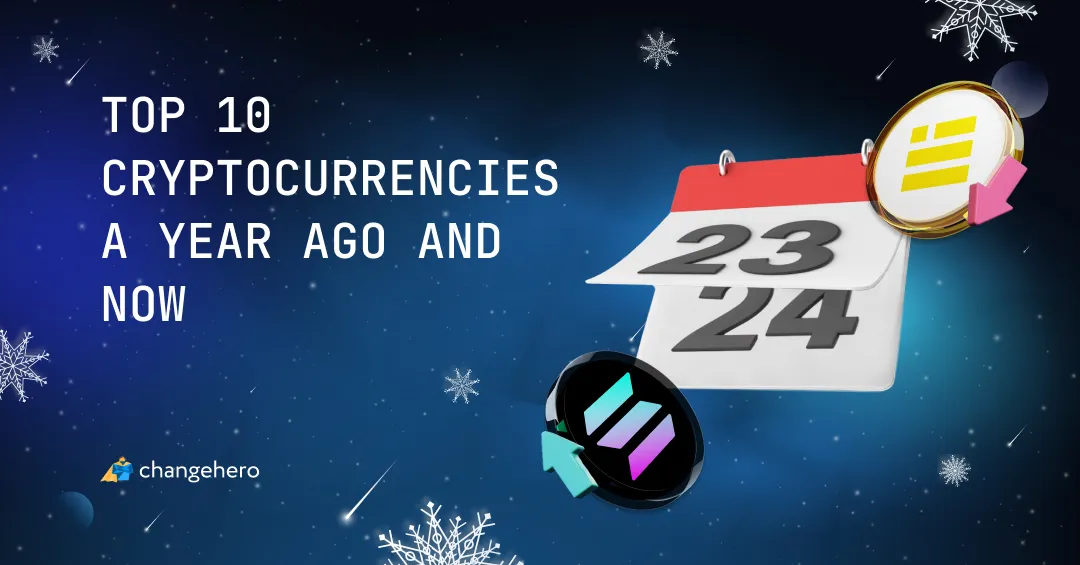When a recent project dethroned Bitcoin’s as the most valuable asset, everyone and their mother started talking about DeFi. If you’re involved in crypto today in any capacity, there is no way you did not hear about the current situation with DeFi: decentralized exchanges flip the volumes of centralized ones, every project and coin races to introduce liquidity mining and yield farming into the protocol, savvy traders and farmers gain incredible returns in mere days and weeks. It’s high time to get to know what is decentralized finance and if it is really as good as it sounds.
Bitcoin Summary
But before we get into the most recent trends, we should have a look why Bitcoin is not treated as the coolest kid on the block.

In late July, Bitcoin began a rally and at some points hit as high as $12,000. However, after these few weeks, the trend reversed and the Bitcoin price started to test support levels instead of resistances, speaking in trading terms. More simply put, the BTC price started touching the lower edge of a price range at the moment. A week ago, it failed to breach resistance at $12,000 for the fourth time, which makes it even stronger, and dipped as low as below $10k. However, keeping in mind the news from stock markets and the dollar inflation prospects, traders expect a long-term stable uptrend and eventual breach of that resistance.
Bitcoin acts more like a long-term investment, but where is the fun in that? It’s not a secret that a lot of people are in crypto to make a quick buck. Well, they find what they seek in today’s decentralized finance.
What is Decentralized Finance?

What is decentralized finance, to begin with? Decentralized finance, or DeFi for short, in the broadest sense, refers to financial applications that are built on the blockchain. Such financial software includes digital currencies, decentralized applications (dApps), financial protocols built on blockchain, smart contracts and so on. So, in the broadest sense of the word, all cryptocurrencies can be included in this definition.
As opposed to centralized finance services, DeFi protocols and projects connect participants through the blockchain peer-to-peer. Since there are no intermediaries like banks or exchanges, no expenses are required to provide financial services. So, DeFi is more accessible at least in terms of prices, and some projects turn the freed assets into yield for the users.
In this article we will be using the term “decentralized finance” to speak about decentralized financial protocols and their native coins that go beyond value transfer or storage, as most old-school cryptocurrencies like Bitcoin are.
Trending DeFi Crypto
yearn.finance
One of the recent DeFi tokens that made news is, of course, yearn.finance token. This DeFi crypto has only been around for a couple of months, but since mid-August flipped Bitcoin in terms of being the most valuable coin on the market. For instance, the current price of YFI token is $21,704.17. The reason for this is simple: YFI has a hard cap of 30,000 tokens on total supply and the capitalization of $650,412,748.
Yearn.finance itself is a protocol that connects market makers and takers, aggregates liquidity and enables leveraged trading. YFI tokens are received in reward for providing liquidity to the protocol and are used mostly as voting power in accepting or declining proposals. Almost 100% of the existing token supply is already distributed, and the community might or might not decide to increase the supply to incentivize newcomers to contribute to the protocol. In that case, the value of a single token might decrease, even though its utility will not.
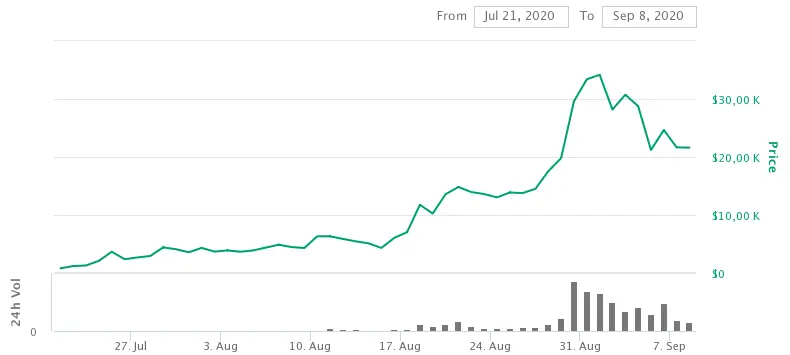
The initial price for a YFI token when it first got to exchanges was around $700. Just a few days later it exceeded $1,000, but the real fame found the project in mid-August when its price flipped Bitcoin’s. If we compare the daily trading volume of this token and the total market cap, we will see that more than half of liquid supply participates in trading. So it is safe to say that the price of YFI token is defined by the market, especially considering that it is a new asset.
UMA
Another project that epitomizes the “decentralized” part in “decentralized finance” is UMA. This is the project that works similarly to derivatives, but is powered by smart contracts, which makes it direct peet-to-peer and executable when conditions are met. On UMA, developers can create synthetic assets, derivatives and futures contracts, as well as interest paying synthetic tokens.
Like in many other similar crypto DeFi projects, UMA Token is necessary for governance. Specifically, the holders are responsible for watching over the Data Verification Mechanism, an oracle network participating in the work of the protocol. It has a larger supply than YFI, but its market capitalization is also superior, making UMA a token in Top-25 assets in the market at the moment.
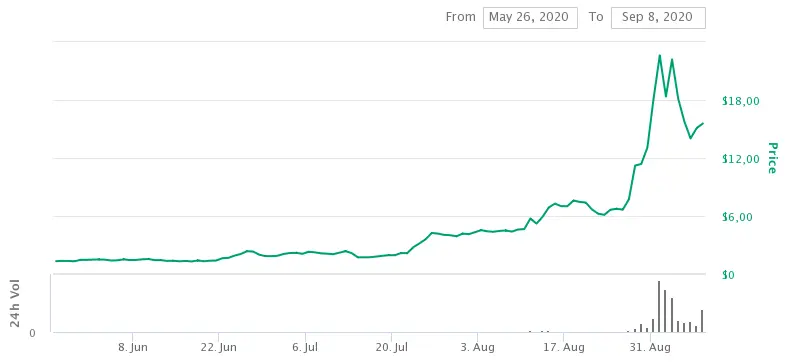
Currently, a single UMA token is worth $15.66. The market capitalization of the project at the moment sits at $857,555,576. During the ICO, UMA tokens were sold for $0.26 each, so it’s an almost 65x ROI. Just like YFI, UMA skyrocketed to a new ATH ($27.63) at the start of September. Some traders state that among the factors that helped achieve this was a boom of interest for another project, SUSHI. UMA has had the highest APY (Annual Percentage Yield) for this token, so when SUSHI lost in price, UMA took a hit, too.
Wrapped Bitcoin
Stablecoins also play a large part in the DeFi as a whole, and in the current trend in it as well. Tether USD alone gained approximately $10 billion (a 250% increase) in market capitalization in a year. But this is just one kind of stablecoins.
Wrapped Bitcoin (WBTC) is a ERC-20 token that is pegged 1:1 to the price of Bitcoin. With it, trading BTC on decentralized exchanges is possible, just like with USDT trading against the dollar is possible on many crypto exchanges.
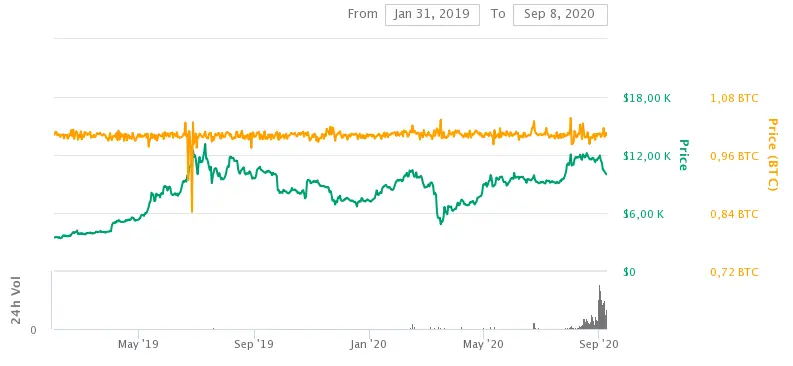
If we look at the chart, we see that the chart of the price of this token is almost identical to BTC, and the WBTC-BTC conversion rate is more or less always equal to one (at some points the peg sank as low as 1:0.73 or jumped to as high as 1:1.1). In comparison to most other trending coins, WBTC is a unique DeFi crypto project.
DeFi in 2020
Decentralized finance in general has roots in the ideas of accessibility and democratization of financial systems. Smart contracts can potentially replace the functions intermediaries like banks and financial institutions had before.
However, DeFi has yet to overcome the regulatory challenges that have yet to arise. Regulators across the world have barely started to accept cryptocurrencies, and now there is an entire rapidly growing sector which is even more complex and can have even more impact on existing economic systems. In the current regulatory framework, most of these projects provide unregistered financial services, which can put them in a compromised position at best and lead to an aggressive shutdown at worst.
Besides, we have yield farming, which seems to have dethroned staking as a means of passive income. More and more market players strive to introduce this new gimmick into their product (and rather successfully, just look at TRON). Investors are more focused on the growth of a DeFi token’s price, and not on the value it or its protocol provides. What consequences might there be? Well, let’s speculate for a bit.
What are the risks?
Please let's not make a new ICO bubble out of #DeFI
— Sasha Ivanov (@sasha35625) June 23, 2020
The hype-induced demand for DeFi tokens and products drives the prices through the roof, and the investors might become stuck in a feedback loop. The more investment comes in, the quicker the number goes up, and the more users want to get into the FOMO. This is a highly unsustainable growth model that may result in a “bubble”. For everyone not familiar with 2018 in crypto, money does get lost in the process, to put it lightly. However, there is a good side to these events — the projects that survive are very likely to provide value in the long term.
No one can stop DeFi clusterfucks like YAM from happening; this is the result of truly free markets.
But if you want to aid in self regulation of said markets, you should shun and shame the folks who promote ridiculously irresponsible financial products. — Jameson Lopp (@lopp) August 13, 2020
Not all the projects today provide the same value to the sector — some of them are forks with another label, some of them are just memes, and some were coded haphazardly just to hop on the hype train. YAM Finance might have been created with an intention to be a legitimate and usable protocol, but a bug in its codebase (which was not audited) led to a critical mistake that devalued all the capital already poured into it.
Seriously, the sheer volume of coins that needs to be printed nonstop to pay liquidity providers in these 50-100%/year yield farming regimes makes major national central banks look like they're all run by Ron Paul.
— vitalik.eth (@VitalikButerin) August 31, 2020
Another risk involved is long-term unsustainability. If a project promises great returns, it is really worth thinking about where these returns come from. At best, the stream of newly minted yield farming tokens will outpace the capital inflow, making them be worth less, and at worst, it’s a fraudulent scheme.
In addition, Vitalik Buterin has all the reasons to be concerned, too, as one of the core Ethereum developers. Most of these projects are on the Ethereum network, and constant transacting clogs the network and drives the transaction fees up.
BREAKING 🚨
Anonymous founder of @SushiSwap sells all of his $SUSHI 🍣 WHO COULD HAVE POSSIBLY PREDICTED THIS?! https://t.co/DtZoqQhUUt pic.twitter.com/cEje9335fZ — Spencer Noon (@spencernoon) September 5, 2020
It’s important to remember that most of the newfangled DeFi tokens are low-cap assets, which makes them more prone to volatility and price manipulation. Should anyone, a whale or a developer put a large order on an exchange, this is surely going to cause a violent price action. And when we say violent, we mean it.
Conclusion
So, to draw a bottom line here: DeFi today is a wildly diverse nascent sector of crypto economy. It has everything from legitimate sophisticated projects that provide real use to absolutely chaotic meme forks. The possibilities which decentralized finance makes true are still being explored. Any investment decision should come from a place of sufficient research and be accompanied with an acknowledgement of risks. Earning profit from DeFi is risky but possible when these conditions are met.
If you found that article on what is decentralized finance in 2020 educational and entertaining, let us know and share it around! Check our updates on ChangeHero Blog and follow us on social networks: Twitter, Facebook, Reddit and Telegram.



